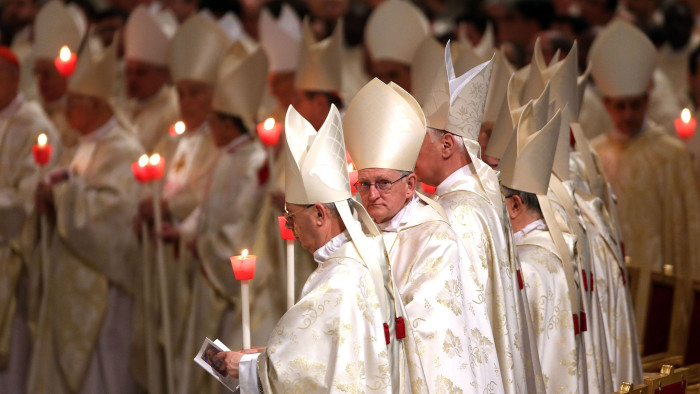Catholic Church under scrutiny

Simply sign up to the Business education myFT Digest -- delivered directly to your inbox.
Pope Francis’s clean up of the Catholic Church’s finances is extending far beyond the walls of Vatican City.
In a first for the Catholic Church, Rome’s Pontifical Lateran University, a hub of teaching for Catholic clergy, has started a course to teach priests and the laity management and finance skills.
Organisers say that it is the latest demonstration of Pope Francis’s desire to overhaul Church finances, and the demand for leaders to be better trained to respond to the Church’s economic needs.
“The Pope has shone a light on the importance of good management not only at the Vatican Bank but across parishes,” says Charles Zech, faculty director for the Center for Church Management and Business Ethics (CCMBE) at Villanova School of Business in the US. In partnersip with the Pontifical Lateran University (PUL) in Rome, it is running the programme during the second year of its International School of Pastoral Management.
The move follows strides taken by the Church under Pope Francis to shake off a reputation as a murky haven for illicit behaviour from tax evasion to money laundering.
Pope Francis has driven reform of the Institute for Religious Works (IOR) — informally known as the Vatican Bank — which has been shrouded in controversy since its founding during the second world war.
His overhaul of the Vatican’s finances has extended from empowering lay specialists to regulate the city state’s financial structure and run its bank, to creating an economic ministry to unify the administration, which has long been characterised by a lack of transparency and compartmentalisation.
Most recently, the Vatican also struck an agreement with Italian authorities to end decades of secret banking.
But church experts say the new course by the PUL is significant because it demonstrates the Pope’s recognition that Church management needs a dramatic upgrade at all levels, not just in the Vatican Bank and the Curia. By instructing the PUL to institute this programme, he is sending another not-so-subtle message that finances matter to the Vatican.
Prof Zech says an investigation he led several years ago found 85 per cent of US diocese had suffered from some kind of embezzlement. Many did a limited audit of their finances, and a fifth of those he surveyed did not do any at all.
“It is a huge problem to the credibility of Catholics,” he says.
The first cohort of students from the PUL began their 15-week programme in February. This will include a week-long residency at Villanova in April 2016.
According to Prof Zech, Villanova will provide online and in-person education, alongside professors from the PUL, to students from around the world. An annual, one-week summer programme will also be established on the US campus and a series of twice yearly international research conferences on church management will take place in Rome and the US.
A desire to professionalise the administration of the Church also comes as its leaders in the US and Europe seek to reshape the administration of parishes amid falling numbers of priests.
In a move that shook the wider Catholic Church, last year Cardinal Timothy Dolan of New York was forced to merge more than 100 parishes as falling numbers of clergy had made them impossible to sustain.
As part of the shake up to allow priests to concentrate on their “day job”, lay managers took over the “temporal” side of church business, leaving it up to the clergy to focus on the spiritual side.
For the time being, these lay administrative roles are often done voluntarily by retirees or as a second career that is usually lowly paid.
But the professionalisation of the Church’s administration is a trend Prof Zech sees continuing under the guidance of Pope Francis, and also because of the wider modernisation of the Catholic Church and a push for greater
transparency.
Comments